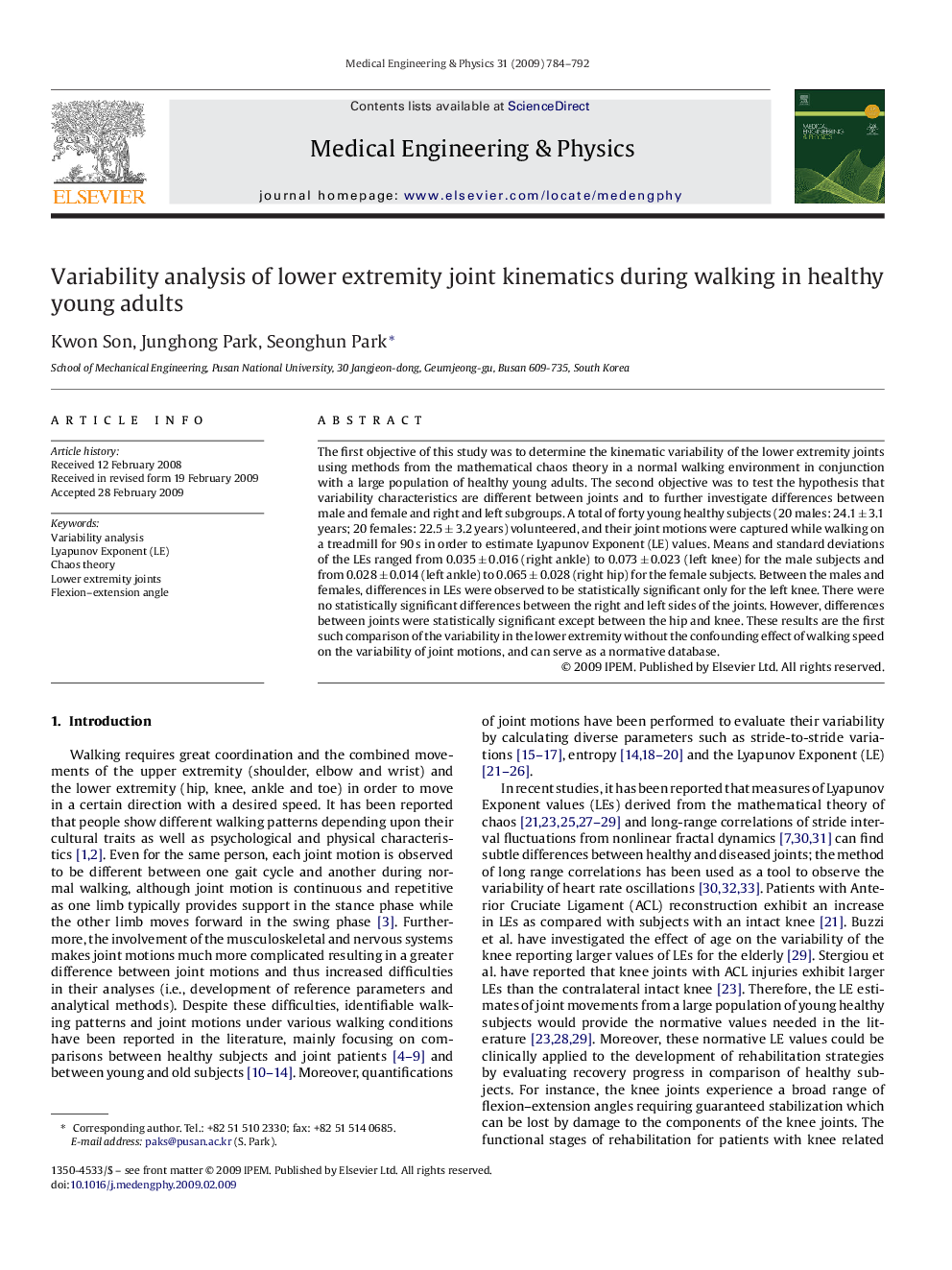| Article ID | Journal | Published Year | Pages | File Type |
|---|---|---|---|---|
| 876495 | Medical Engineering & Physics | 2009 | 9 Pages |
The first objective of this study was to determine the kinematic variability of the lower extremity joints using methods from the mathematical chaos theory in a normal walking environment in conjunction with a large population of healthy young adults. The second objective was to test the hypothesis that variability characteristics are different between joints and to further investigate differences between male and female and right and left subgroups. A total of forty young healthy subjects (20 males: 24.1 ± 3.1 years; 20 females: 22.5 ± 3.2 years) volunteered, and their joint motions were captured while walking on a treadmill for 90 s in order to estimate Lyapunov Exponent (LE) values. Means and standard deviations of the LEs ranged from 0.035 ± 0.016 (right ankle) to 0.073 ± 0.023 (left knee) for the male subjects and from 0.028 ± 0.014 (left ankle) to 0.065 ± 0.028 (right hip) for the female subjects. Between the males and females, differences in LEs were observed to be statistically significant only for the left knee. There were no statistically significant differences between the right and left sides of the joints. However, differences between joints were statistically significant except between the hip and knee. These results are the first such comparison of the variability in the lower extremity without the confounding effect of walking speed on the variability of joint motions, and can serve as a normative database.
